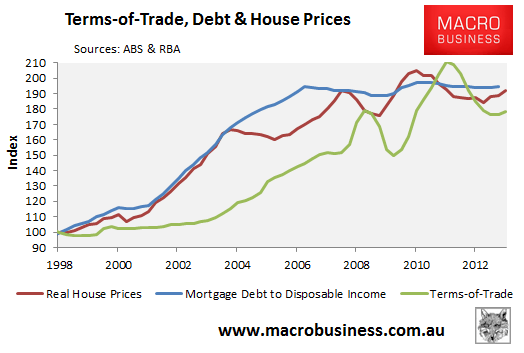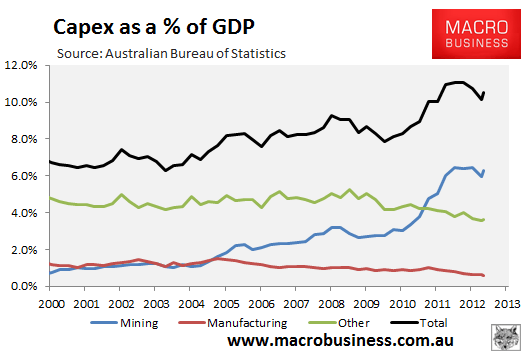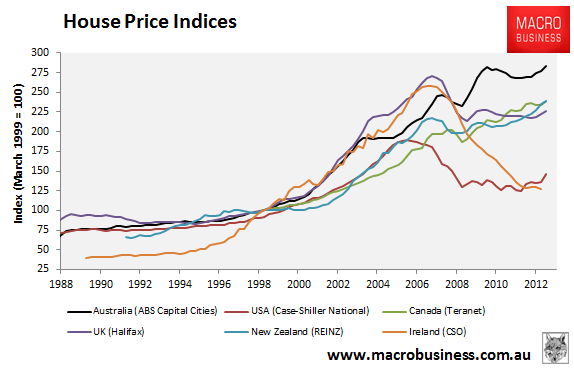
The Reserve Bank of Australia (RBA) released its quarterly Bulletin late last week, which included a number of papers on a variety of topics. One of the papers provided a detailed examination of the Performance of Resource Exporting Economies, namely: Australia, Canada, Brazil, Chile, Russia, and South Africa, and found:
The surge in demand for resources over the past decade led to sharp increases in the terms of trade not just for Australia, but also for other economies with comparable resource exports… Each of these economies experienced an increase in investment, although the surge in resources investment in Australia has been particularly large. The real exchange rates in these economies appreciated, weighing on other trade-exposed industries, while parts of the non-traded sector benefited from the boost to income and activity from the resources boom. In general, the resource-exporting economies experienced relatively strong growth in economic activity and inflation remained well contained, particularly compared with previous booms in resource prices.
It would not be over-reaching to suggest that a key ingredient of the strong house price performance in Australia is the once-in-a-century boom in commodity prices and mining-led capital expenditures (capex).
Importantly, the commodity price (terms-of-trade) boom came along just as mortgage growth began to wane, enabling house prices to remain “stronger for longer” via their positive effect on incomes (see next chart).

The mining-led capex boom began later, gathering steam over the past three years. It, too, has provided strong support to jobs, income and growth just as Australia’s terms-of-trade began to decline from mid-2011 (see next chart).

Of course, Australia’s housing market is not alone in benefiting from commodity-led growth. In the Anglosphere, the housing markets of major commodity exporters – Australia, Canada, and New Zealand – have performed far better than those of non-commodity exporters – The United States, United Kingdom, and Ireland – via the positive impact from the global commodity boom on incomes, growth and jobs (see next chart).

The question, then, is what will power the Australian housing market as the commodity super-cycle winds down? With the positive tailwinds from rising commodity prices and mining-related capex likely to reverse, combined with an ageing population and falling worker share, the current run-up in housing prices cannot be viewed as anything other than an investor-led response to financial repression from record low interest rates. The hope is that it doesn’t end in a thud in the event that the terms-of-trade and mining investment unwinds in a disorderly manner, or interest rates are forced-up from their current lowly level.

